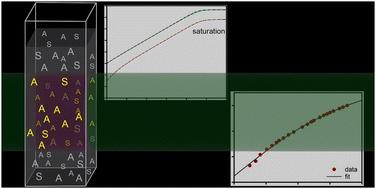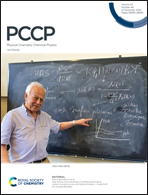Extracting accurate information from triplet–triplet annihilation upconversion data with a mass-conserving kinetic model†
Abstract
Triplet–triplet annihilation upconversion (TTA-UC) is a process that shows promise for applications such as energy-harvesting and light-generation technologies. The irradiance dependent performance of TTA-UC systems is typically gauged using a graphical analysis, rather than a detailed model. Additionally, kinetic models for TTA-UC rarely incorporate mass conservation, which is a phenomenon that can have important consequences under experimentally relevant conditions. We present an analytical, mass-conserving kinetic model for TTA-UC, and demonstrate that the mass-conservation constraint cannot generally be ignored. This model accounts for saturation in TTA-UC data. Saturation complicates the interpretation of the threshold irradiance Ith, a popular performance metric. We propose two alternative figures of merit for overall performance. Finally, we show that our model can robustly fit experimental data from a wide variety of sensitized TTA-UC systems, enabling the direct and accurate determination of Ith and of our proposed performance metrics. We employ this fitting procedure to benchmark and compare these metrics, using data from the literature.

- This article is part of the themed collection: 2022 PCCP HOT Articles


 Please wait while we load your content...
Please wait while we load your content...
